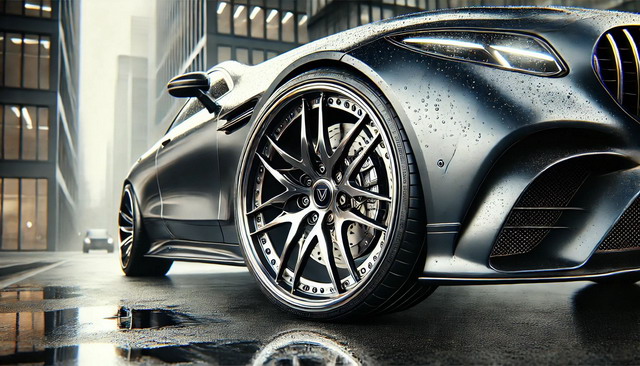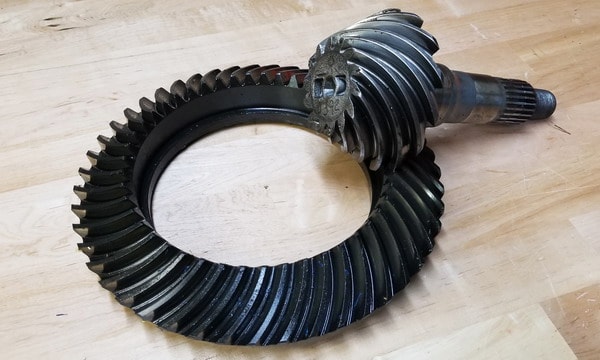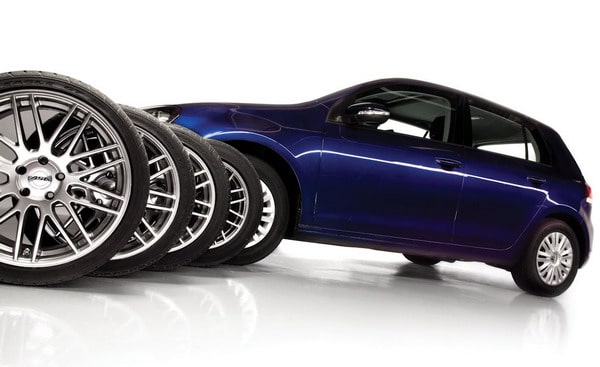Wheel alignment
Last Updated on July 22, 2024 by Mutiara
CAMBER
Camber is the angle of the wheels,relative to the road, looking at the car from the front (or rear). Try to imagine a vertical line through the middle of the wheel, 0 degrees camber is when this imaginary line is in square with the road (black). Positive camber occurs when the “middle-lines” are in “V-shape” (red). Negative camber occurs when the “middle-lines”are in “A-shape” (green). Camber will generaly be around – 0.5 to – 5.5 degrees (negative).
Negative Camber
When cornering the body of the car will start rolling, inducing positive camber. Negative camber will compensate this effect, resulting in more grip and stability. It also creates a force on the wheels called “camber-thrust”. This force helps when the inner wheel lifts up during cornering and causes the car to make a sharper turn, pushing the car inwards.
Car-designers usually try to keep about 0.5 degree negative camber while cornering with the suspension being compressed. That means that the negative-camber at ride height will become more negative when suspension compresses, at the same time the bodyroll will eat up negative camber. Hopefully leaving a bit of negative for Cornering-grip and better steering and even heating of the tires as well as even tire-wear.
The ideal situation would be that the tires are always perpendicular to the road under all circumstances. However this is usually harder to accomplish for a street car than a race car, because of more wheel-travel, softer suspension, and more body-roll. Another downside of negative camber is the increase in inner-side tire wear, something which is not as much of an issue for race cars as it is for street cars.
Usually the compromise for street cars is to have a negative camber between 0.5 and 2.0 degrees. On most street cars, the adjustment of camber is rather difficult. However, camber adjustment plates are available as upgrades for some vehicles to allow a more precise and convenient adjustment.
Caster
Looking at the car from the side, imagine/draw an axis-line through the steering-turning-axis of the wheel. Most of the times through the upper and lower ball-joints or through the centreline of the McPherson-strut. Positive caster occurs when the top of this axis-line tilts towards the rear of the car (green). Negative caster is the opposite (red). Positive caster provides the selfcentring-force which makes the car go straight without holding the steering wheel.
Generaly caster will be between +2 and 5.5 degrees, positive. Caster only applies to the front/steering-wheels. It is needed to create directional steering stability. In order to understand what the effect of caster is we can take the front-wheels of a shopping cart. These wheels do have positive camber and because of that they will go in the direction where you push the cart. If you would turn these wheels 180 degrees than they would have negative caster. Pushing the cart would become a lot more difficult and at the same time very unpredictable/unstable.
Positive caster will also affect camber when steering, The outher wheel will get more negative camber as the inner wheel’s camber will get less negative.
The more positive caster the more “feed-back” will be feelt while driving the car, especially if there is no power steering. One could think, “the more positive caster the better” but that’s not really the case. It would make steering harder as the steering force will increase. Another disadvantage is that during steering positive caster will cause the inner wheel to rise and the outher wheel will drop, thus transferring “corner-weight” from the inner to the outher wheel, causing a loose feeling in the car.
Toe In & Toe Out
Looking to the car from the top (or bottom) imagine lines through the middle of the wheels in riding direction. Toe in occurs when these lines are in “A-shape”, lines cross in front of the wheels (red). Toe out occurs when these lines are in “V-shape”, lines cross behind wheels (green).
Toe effects 3 major areas; tire wear, straight-line stability, and corner entry handling.
For minimum tire-wear it would be ideal to have the wheels parralel / 0 degrees while riding. This can be acomplished to give a bit static toe-out to a frontwheel-drive car, or toe-in to a rearwheel-drive car.
A frontwheel-drive car has the tendency to understeer. Toe-out will induce a bit of oversteer, so it could compensate the frontwheel-driver’s understeer.
Excessive toe-in will cause the tire to scrub on the outboards and so will shorten the tire-life. Too much toe-out will cause the inboard edges to wear out.
Toe-out improves steering response while toe-in improves straight line stability.
Sometimes toe-in or toe-out is used for another effect; Tire-temperature. For racing-tires it’s very important to reach a certain temperature in order to deliver maximum performance/gripp. If the tires stay too cool than toe can be used for the “scrubbing” efect to increase temperature from friction. The scrubbing also has another positive effect, it will scrub the tires clean providing extra gripp for braking and cornering.
Street cars often are set up with toe-in or zero toe. For good straight-line stability and tread life, cornering is sacrefied. Race cars are often set up with toe-out, sacrificing straight-line stability and increasing tread ware for good cornering.
If the suspension is independent, Toe-in or out can also be applied to the rear-wheels. The effect on the rear-wheels is generaly the same as on the front.
Also, there’s a difference between static and dynamic toe. This is especially noticeble on frontwheel-drive cars or rearwheel-drive cars with independant suspension. Dynamic toe occurs when torque is applied and the driver wheels pull themselves forward trying to toe-in. The design of the suspension system controls how much toe-in is induced. On streetcars this effect is a lot bigger than on race cars as they use softer rubber bushings in the suspension-joints. These provide more comfort and “kill” more noise but doing so sacrefice precision and stiffness.







